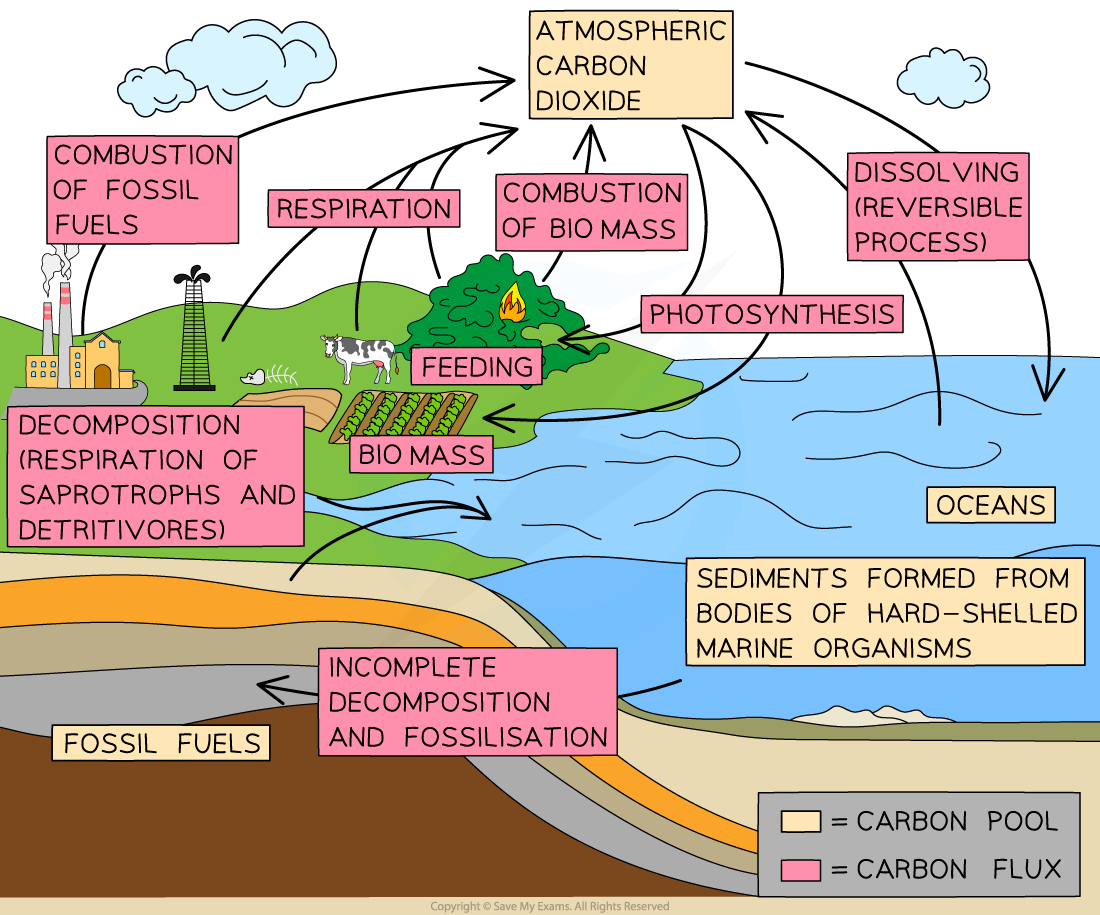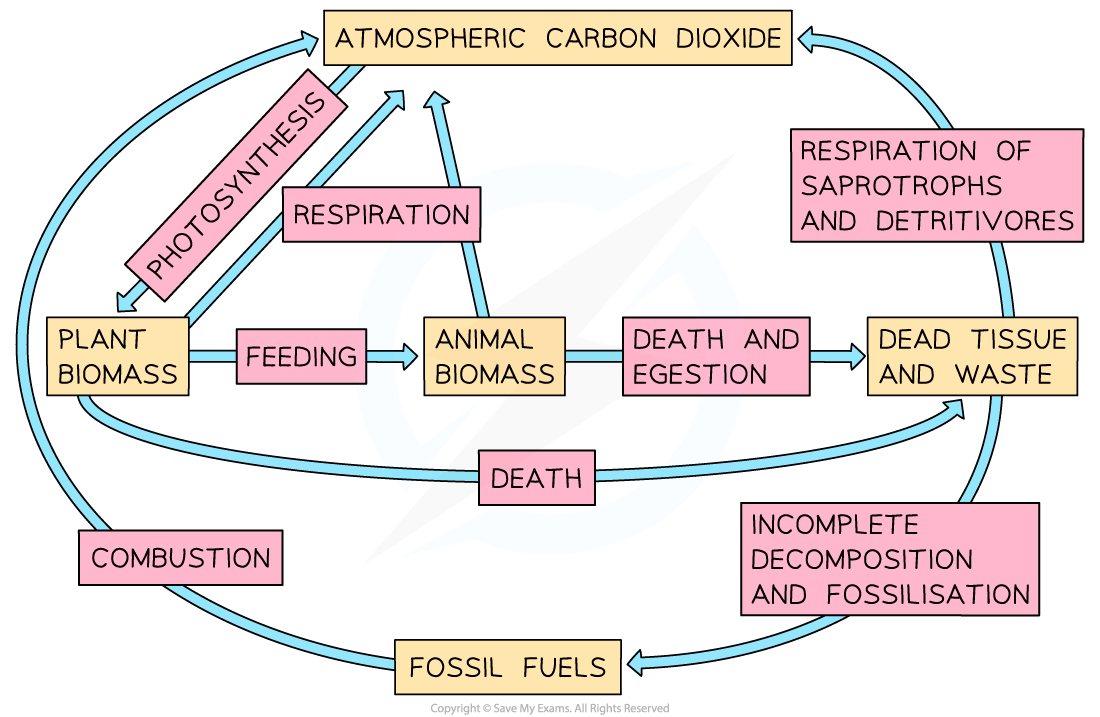Drawing the Carbon Cycle
- The many processes by which carbon is transferred from one store to another are collectively known as the carbon cycle
- During the carbon cycle, carbon is present in both organic and inorganic forms
- Organic carbon is found in the biomass of living organisms e.g. in carbohydrates and proteins
- Inorganic carbon is found in the atmosphere as carbon dioxide and in the oceans as e.g. hydrogen carbonate ions
- During the carbon cycle, carbon is present in both organic and inorganic forms
- Carbon cycle diagrams show:
- Carbon stores, known as pools, e.g the ocean, fossil fuels, or living organisms
- Processes of carbon transfer, known as fluxes e.g. dissolving, combustion, or photosynthesis

An illustrated carbon cycle diagram showing both terrestrial and marine cycling

A simple carbon cycle diagram showing terrestrial carbon cycling
Estimation of Carbon Fluxes
- The processes by which carbon is transferred from one pool to another are known as fluxes
- Fluxes can be measured quantitatively, showing how much carbon is transferred by a particular process
- The unit for carbon fluxes is gigatonnes, or GT
- One gigatonne is a billion tonnes
- It is difficult to measure global carbon fluxes precisely, but scientists can make estimates by measuring smaller ecosystems and scaling these measurements up
Estimated Global Yearly Carbon Fluxes Table

- Estimating carbon fluxes is very important as humans seek to predict the impacts of climate change and reduce carbon emissions
- By calculating the total carbon fluxes that remove carbon from the atmosphere and the total carbon fluxes that add carbon into the atmosphere scientists can calculate atmospheric carbon increases
- This enables scientists to predict levels of atmospheric warming
